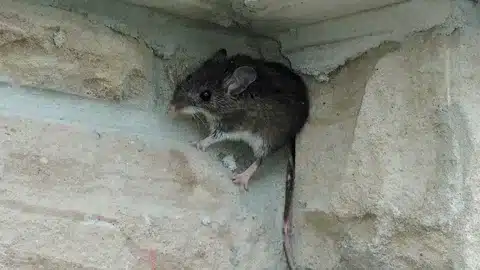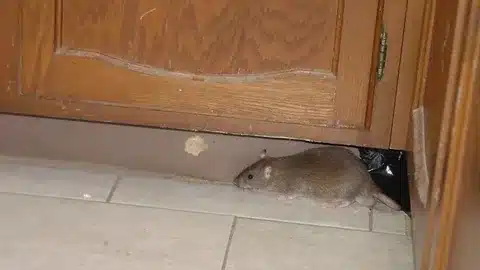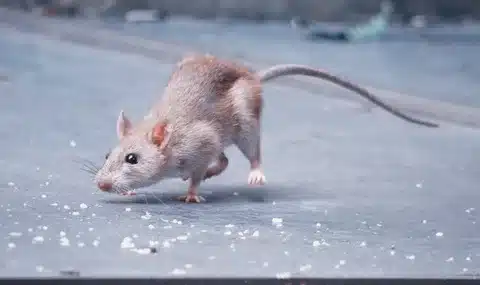Introduction
How Far Do Rats Travel From Their Nest: Rats, those elusive and adaptable rodents, have long intrigued scientists and urban dwellers alike with their remarkable ability to thrive in various environments. One particularly intriguing aspect of rat behavior is their range of travel from their nests. These clever creatures have been observed traversing through both natural and urban landscapes, raising questions about the extent of their factors that influence their journeys.
We will delve into the fascinating world of rat mobility, seeking to understand just how far these rodents are willing to venture from their nests and the reasons behind their remarkable travels. From the bustling city streets to the hidden corners of the wilderness, we will uncover the secrets of rat migration and the implications it holds for human society and ecological ecosystems.
The study of rat mobility is not only a matter of scientific curiosity but also has practical implications for pest control and disease management. The spatial behavior of rats can assist in designing more effective strategies to control their populations, reduce the risks of disease transmission, and minimize damage to infrastructure and agriculture.

How can you tell where a rat’s nest is?
Homeowners find rat nests in enclosed areas like crawlspaces, between walls, in attics, under porches, or in boxed-in plumbing. In outdoor areas surrounding homes, things such as debris piles, yard water, old furniture, ponds, trees, and garbage dumps are inviting rats, as well.
Droppings: Rat droppings are a clear indication of their presence. These droppings are typically small, dark, and cylindrical, resembling grains of rice. The proximity of droppings can provide clues about the nesting area.
Gnaw Marks: Rats have strong teeth that continually grow, so they gnaw on objects to keep them trimmed. Look for gnaw marks on wood, wiring, insulation, and other materials near potential nesting sites.
Nesting Materials: Rats use various materials to build their nests, including paper, cloth, insulation, and even debris. Finding these materials in a concentrated area can indicate a nest nearby.
Burrows: Rats may dig burrows in outdoor areas, such as gardens or beneath sheds. Look for small, tunnel-like openings in the ground or signs of digging in soil.
Sounds: Rats are often active at night. If you hear scratching, scurrying, or squeaking sounds coming from walls, ceilings, or other hidden areas, it may indicate a nest.
Odor: Rat nests can emit a foul odor due to the accumulation of urine and feces. A strong, musty smell in a specific area could be a sign of a nearby nest.
Visual Sighting: In some cases, you may actually see rats entering or leaving their nesting area, especially during dawn or dusk when they are most active.
Trails and Runways: Rats tend to follow specific routes when foraging for food and water. You might find well-worn paths or runways along walls or through grass leading to their nest.
Do rats come back to the same place?
Rats are good navigators and can find their way back to a location using visual cues or their sense of smell. This means that if a rat has previously established a burrow or nest in a particular area, it may return to that location.
Familiarity: Rats are creatures of habit and tend to stick to familiar territory where they have previously found food, water, and shelter. If they’ve successfully nested or foraged in a specific area before, they are likely to return.
Scent Marking: Rats use scent marking to communicate and navigate. They leave pheromone trails that can guide them back to a known location. This is especially true when they have established nests or burrows in an area.
Resource Availability: Rats are opportunistic feeders, and if a location continues to offer a readily available food source, they will return to it. This behavior is particularly common in urban areas where rats may frequent garbage bins or pet food dishes.
Safety and Shelter: Rats seek out secure and hidden nesting sites to protect themselves from predators and adverse weather conditions. If a particular location provides a sense of security, rats are more likely to return to it.
Navigation Skills: Rats are adept navigators and can remember the layout of their environment. They use landmarks and visual cues to find their way back to familiar places.
Maternal Nesting: Female rats that have given birth in a nest may return to the same nesting site with their offspring, as it provides a secure and familiar environment for raising their young.
Will rats return to a disturbed nest?
Once rats have established a nest, they will often return even if it has been disturbed. They choose their homes wisely, and once they have taken the trouble to set them up, they will usually stay put.
Degree of Disturbance: If a rat’s nest is only mildly disturbed, such as by human presence or minor disruptions, there’s a good chance that the rats will return to the nest once they perceive that the area is safe again. Rats may be cautious and temporarily abandon a nest if they sense a threat but return later.
Availability of Alternatives: If the original nest site becomes uninhabitable due to significant disturbance, rats may seek alternative nesting locations nearby. They may adapt and build a new nest if necessary.
Maternal Instinct: Female rats with young offspring are especially likely to return to their nests even after disturbances. The maternal instinct to protect and care for their babies can be a strong motivator for returning to the nest site.
Persistent Disturbance: Repeated or consistent disturbances in the nest area can make it less attractive to rats, and they may eventually abandon it in favor of more peaceful locations.
Environmental Changes: If environmental conditions in the area change significantly, such as a lack of food or water sources, rats may be forced to seek new nesting sites.
How do you know when all the rats are gone?
If the signs that were once there have now gone, this is a very good indication that the infestation has been removed. Common signs of a rat infestation include Droppings. Brown rat droppings are dark brown and a tapered, spindle shape.
Monitor Droppings: As you mentioned, rat droppings are a common sign of infestation. Continuously monitor for new droppings in the area where the rats were present. A decrease in droppings over time is a positive sign, but the absence of droppings for an extended period can be a more reliable indicator that the rats have been eliminated.
Check for Gnaw Marks: Rats leave gnaw marks on various materials. Inspect areas where gnaw marks were previously observed to see if new damage has occurred. A lack of fresh gnaw marks can suggest that rats are no longer active.
Listen for Sounds: Rats are often noisy when active, so listen for scratching, scurrying, or squeaking sounds. If you no longer hear these sounds over an extended period, it could indicate that the rats have left the area.
Inspect Nesting Sites: If you were aware of specific nesting sites, such as burrows or nests in walls or attics, check these locations for signs of activity. The absence of rats or new nesting materials can indicate success.
Use Traps or Bait Stations: Continue to use rat traps or bait stations for a period even after signs of rat activity have diminished. If you catch no rats or consume bait over an extended period, it may suggest that the population has been controlled.
Seal Entry Points: Ensure that all potential entry points into your property have been sealed to prevent new rats from entering. Rats can squeeze through small openings, so thorough sealing is essential.
Where do rats stay during the day?
Inside, rats can be found hiding out in holes, cracks, and crevices climbing up through drains in bathrooms and kitchens behind cabinets behind and under appliances in air ducts and ventilation systems in piles of clutter in storage containers in hollow walls and in crawl spaces, attics, garages, and basements.
Rats are nocturnal creatures, which means they are most active during the night. During the day, they seek shelter in concealed and protected locations to rest, stay safe from predators, and conserve energy.
Wall Voids: Rats often nest and hide in the gaps and voids within walls, especially in older or less well-maintained buildings.
Crawl Spaces: Rats can access crawl spaces beneath houses and buildings, making them ideal hiding spots.
Attics: Attics provide shelter and warmth, making them attractive places for rats to nest.
Basements and Cellars: These areas offer protection from the elements and are frequently used by rats as shelter.
Garages: Rats may hide in garages, especially if there are food sources or clutter that provides cover.
Under Appliances: Rats can squeeze into small spaces under appliances like refrigerators and dishwashers.
Cabinets and Cupboards: In kitchens and bathrooms, rats may hide behind or inside cabinets and cupboards.
Air Ducts and Ventilation Systems: Rats can access and travel through air ducts and ventilation systems, providing them with concealed pathways.
Piles of Clutter: Stacks of boxes, unused items, and cluttered storage areas can offer rats hiding places.
What time of year do rats nest?
In rural areas, they tend to breed during the warm summer months, which means, come the winter, undetected infestations could already be substantial. Urban mice and rats tend to breed throughout the year with warm, indoor nesting sites.
Rural Areas:
In rural areas, rats, particularly brown rats Rattus Norvegicus, often exhibit seasonal nesting patterns. They tend to breed more actively during the warmer months, typically in spring and summer. This is because warmer weather provides more abundant food sources and makes it easier for young rats to survive. In rural environments, rat populations may grow substantially during the summer months, and undetected infestations can become more significant by winter.
Urban Areas:
Urban rats and mice both house mice and brown rats often have access to warm, indoor nesting sites year-round. These indoor environments, such as buildings, sewers, and subways, offer a stable temperature and protection from the elements, allowing rats to breed continuously throughout the year. In such areas, the absence of harsh seasonal changes means that rats can reproduce and nest consistently.
Will rats leave on their own?
Failing to report a rat infestation is not wise. They do not disappear of their own accord and they will likely spread.
Population Growth: Rats are prolific breeders, and a small rat population can quickly multiply into a large infestation if left unchecked. A single pair of rats can produce dozens of offspring in a year, leading to exponential growth.
Damage: Rats can cause significant damage to property by gnawing on structures, wiring, and insulation. They can also contaminate food and surfaces with their droppings and urine.
Health Risks: Rats are known vectors for various diseases that can be transmitted to humans through contact with their feces, urine, or saliva. These diseases include leptospirosis, hantavirus, and salmonellosis.
Nuisance: The presence of rats can be a nuisance, causing disturbances with their noises, odors, and the fear they instill in residents.
Spread to Other Areas: Rats can easily move to other parts of a building or to neighboring properties, leading to broader infestations and complications.
How far does a rat take so it doesn’t come back?
There have been reports of mice and rats covering two miles to return to a property, and you should be sure to take any rodent you have trapped at least this distance away from your home to ensure your houseguest does not return. Squirrels that have been living trapped are even more of a problem than mice to get rid of.
Species: Different species of rodents have different home ranges and behaviors. While some may travel longer distances in search of a new home, others are more likely to stay within their familiar territory.
Instinct to Return: Rats and mice are known for their homing instincts, which means they may attempt to return to their original nesting or foraging sites, even if relocated some distance away.
Competition and Available Habitat: The success of relocation also depends on the availability of suitable food, water, and shelter in the new location. If the area you relocate rodents to is similar to your home in terms of resources, they may still attempt to return.
Survival: Relocated rodents face challenges such as finding food and avoiding predators in unfamiliar territory. Some may not survive long after being relocated.
Legal and Ethical Considerations: In some regions, there may be legal restrictions or ethical concerns related to the trapping and relocation of wildlife, as it can disrupt local ecosystems and spread diseases.

Conclusion
Rats travel from their nests is a complex and multifaceted one, revealing the remarkable adaptability and survival strategies of these rodents. Through extensive research and observations, we have learned that rats are not limited by a fixed range but are instead influenced by a variety of factors, including the availability of food, water, shelter, and social dynamics within their colonies.
Rats have demonstrated an astonishing ability to traverse both natural and urban environments, often covering surprisingly long distances in search of resources and mates. While some studies have recorded traveling rat up to several hundred meters from their nests, others have reported much shorter ranges, depending on the local conditions and the specific species of rat.
The study of rat travel highlights the intricate relationship between wildlife and human environments. Rats, as urban adapters, offer a unique perspective on the challenges and opportunities that arise when wildlife shares our cities and towns. By gaining a deeper understanding of their movements, we can work towards more effective coexistence and mitigation strategies.





No Comments